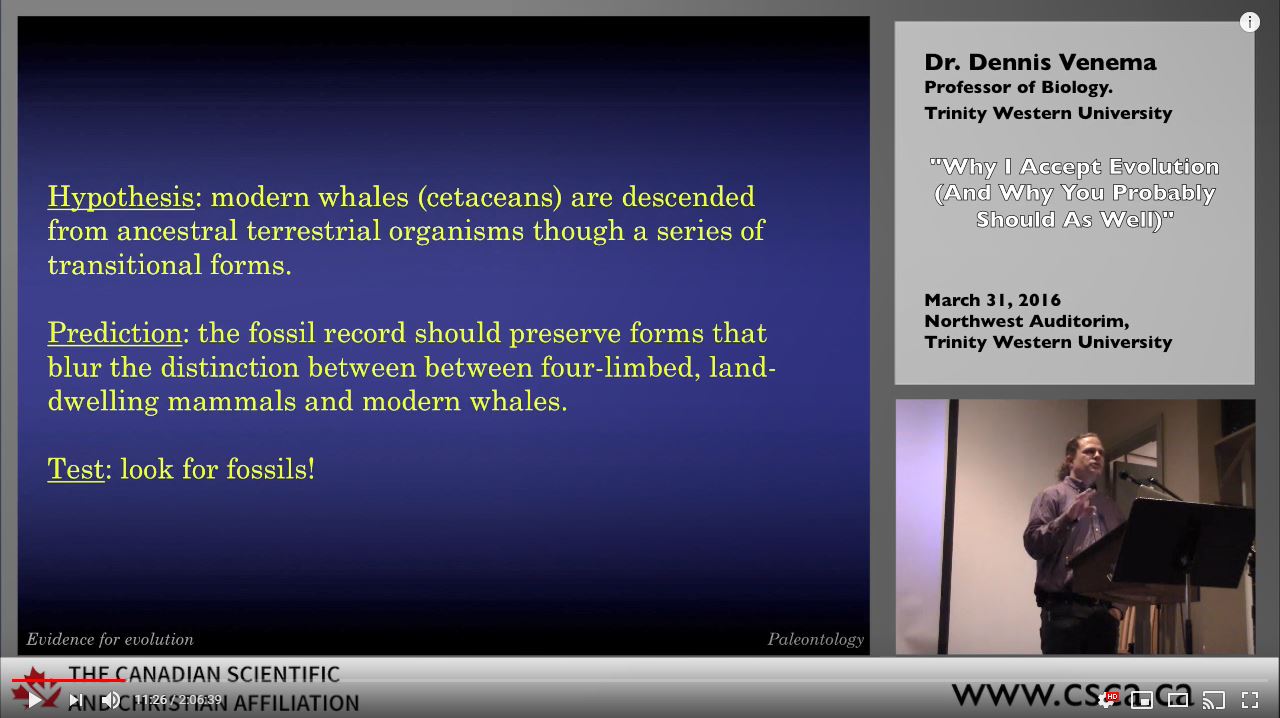That’s a bold claim, viz., that I profoundly misunderstand microservices architectures. Are you sure? Turns out I am aware and have worked with them and their predecessors, e.g., SOA, etc. I think I’m seeing a pattern in your thinking. You’re quick to conclude ideas are true before you have sufficient data to support it. You believe your understanding of things is so high that you can make conclusive judgments without having all the facts.
Embracing evolution is something where I’m beginning to see similar thinking. An example is to conclude that terrestrial animals are ancestors to whales. It’s possible, but is it conclusively proven or is it your best estimate based on the limited data you have? You see things like hind limb loss in dolphins that seems consistent with the hypothesis that whales are descendants of land creatures. Being consistent with is a lot different than a proof. You look at the genomics of both and conclude this also is consistent with that hypothesis. Those are good observations, and consistency says you’re going in the right direction, but a good test engineer would challenge it as proof. Just looking at the abstract of the paper that Stephen provided from PNAS on the Developmental basis for hind-limb loss in dolphins, it’s interesting to note how they see their argument not as proof but as suggestive of support for the hypothesis. Notice in the quote below from that abstract terms like “suggests,” “may account for,” and again “suggests.” That’s completely fair to recognize data as “suggestive of” or “may account for,” but not enough to conclude that their data is conclusive for the hypothesis. I see lots of this in evolutionary arguments which is fair but taking the next step to accepting it as conclusive seems unwarranted given the quantity of well-known unknowns. It seems to me that the evolutionary argument is built on the large number and consistency of arguments that are suggestive rather than conclusive.
“Interpreting our results in the context of both the cetacean fossil record and the known functions of Shh suggests that reduction of Shh expression may have occurred ≈41 million years ago and led to the loss of distal limb elements. The total loss of Shh expression may account for the further loss of hind-limb elements that occurred near the origin of the modern suborders of cetaceans ≈34 million years ago. Integration of paleontological and developmental data suggests that hind-limb size was reduced by gradually operating microevolutionary changes.” (https://www.pnas.org/content/103/22/8414.long)
It’s very similar to your belief that I “profoundly misunderstand microservices architectures.” I’m definitely not a software engineer or coder like you, but I’ve had many work for me, and I’ve guided and supervised their work. (some from BAH) My work in my last few years before retirement was closer to the sensor end of the data flow, and working with the data at its inception where it must be identified, classified, formatted, scaled, etc. In that regard, I spent the last 2 yrs working with AI strategies to exploit imagery. We’ve looked at convolutional neural nets (CNN) similar to what the Stanford Vision Lab did especially with supervised training (crowdsourcing with Amazon’s Mechanical Turk), Support Vector Machines (SVM), and others.
It’s also interesting to me that you seem so impressed with microservice architectures and that it accomplishes the simplification problem with complexity. It does that to an extent and is clearly useful, but what’s really interesting is that that strategy, simplification of complexity, is a highly abstract idea that originates with mental activity. It does not come about because of random changes to code followed by a form of natural selection. To me the very existence of microservice architectures reflects design rather than evolution. emphasized text If you randomly change the old Microsoft disk operating system (DOS) would you expect to see Windows 10 come about ever. Design is clearly the better choice. What say you?
